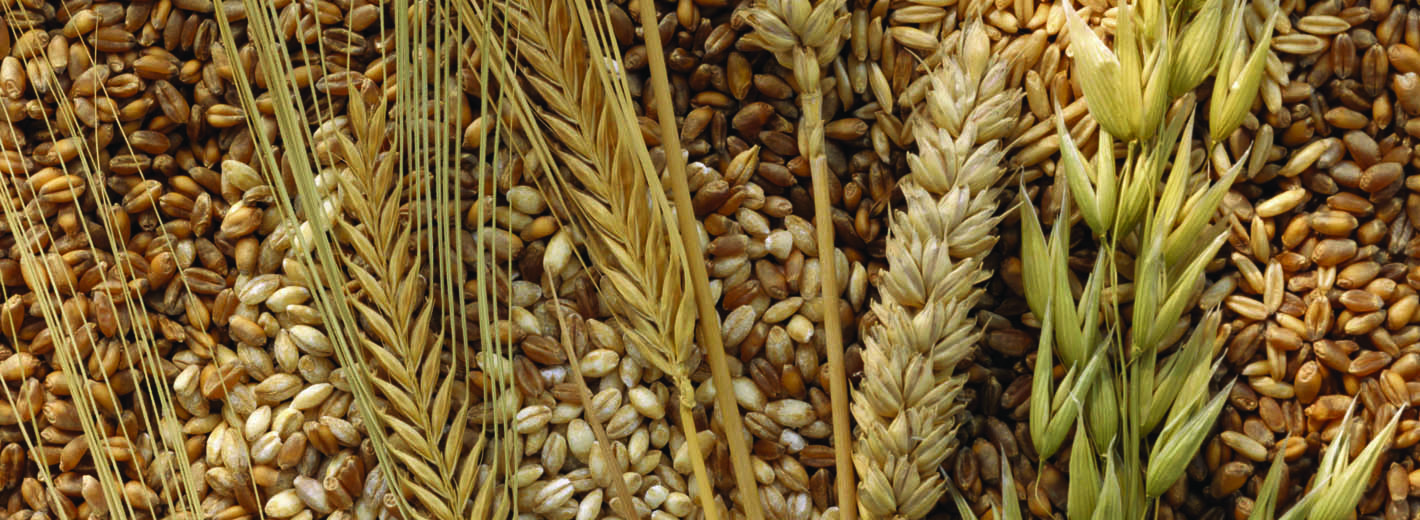
Ask Mickey: Sprouted vs. Unsprouted Grains
- by bonappetit
What are “sprouted grains” and are they any better than the unsprouted kind?
Once found only in small health food stores, sprouted grains and legumes are now infiltrating large chain-grocery store aisles. Their packages often carry health claims and buzz words like “low-glycemic index,” “complete protein,” “high in antioxidants,” or “easily digestible.”
The question is: Are these claims true?
Grains are the seeds of plants, primarily from those known as cereal crops. A whole grain comprises the germ (which has most of the plant’s nutrients), endosperm (the starchy portion), and bran (the outer protective shell rich in B vitamins). In the lifecycle of a seed, there is a point between when the seed has started to sprout and when it germinates into a full plant. Under certain temperature and humidity conditions, this is the point at which it can become a sprouted grain. The outer bran layer will split open and a small shoot may be visible. This process can also occur with legumes such as lentils.
Historically, grains sprouted naturally in storage, though modern farming and processing has stopped much of this. Because there is evidence that there may be additional health benefits to sprouted grains, companies have developed modern techniques to allow grains to sprout. They are now used in cereals, breads, pastas, and other grain products found on grocery-store shelves.
There have been a number of small studies (mostly among rats, not humans) comparing sprouted grains to both whole grains and refined grains (the white kind, where the germ and bran have been removed). The results suggest that sprouted grains may be slightly higher in vitamin C, iron, and folate, and contain more readily absorbed protein as well as a more digestible form of starch than whole grains. However, these differences do not appear to have any significant benefit to humans.
Researchers tested the benefits of sprouted grains on blood glucose levels in men with diabetes and found that sprouted brown rice improved their fasting blood glucose levels more than white rice, but no more than traditional brown rice. Similar slight positive benefits on blood pressure and cardiovascular disease have been seen in rats. The claims that sprouted grains offer higher enzymatic activity are not well backed by research. Though some people find sprouted grains more easily digestible than whole grains, those that still contain gluten are not safe for people with gluten sensitivity or intolerance.
Breads and cereals made from sprouted grains offer a heartier texture and flavor than some whole grain products, which may be appealing to some, though the higher price tag may not be. Another thing to note: the government does not regulate how much sprouted grain must be present in a food product to claim on the label that it has sprouted grains. Some of these products contain seeds and legumes in addition to the sprouted wheat grain and therefore may be higher in fiber and protein than traditional whole wheat bread.
If you enjoy the taste of sprouted grains, continue to include them in your diet. However, whole, unsprouted grains provide a similar nutritional benefit and are a more economical way to improve your diet if you typically consume mostly refined grains. Either way — aim to make at least half of the grains you eat whole.
September is the perfect time to try a new whole grain as it is national Whole Grain Month! Click here for more information on how to prepare whole grains and for some recipe ideas.
 About Ask Mickey: At Bon Appétit, we know there’s a lot on your plate that you worry about. Making good food choices helps you avoid unwanted pounds, work or study (and sleep!) better, and form long-lasting healthy eating habits. In the Ask Mickey column, Bon Appétit Management Company registered dietitian nutritionists offer tips on “chewing the right thing” and answer your nutrition questions. (Mickey, aka Michelina, is a particular feisty Italian grandmother who continues to inspire us.) Email your questions and feedback to [email protected].
About Ask Mickey: At Bon Appétit, we know there’s a lot on your plate that you worry about. Making good food choices helps you avoid unwanted pounds, work or study (and sleep!) better, and form long-lasting healthy eating habits. In the Ask Mickey column, Bon Appétit Management Company registered dietitian nutritionists offer tips on “chewing the right thing” and answer your nutrition questions. (Mickey, aka Michelina, is a particular feisty Italian grandmother who continues to inspire us.) Email your questions and feedback to [email protected].